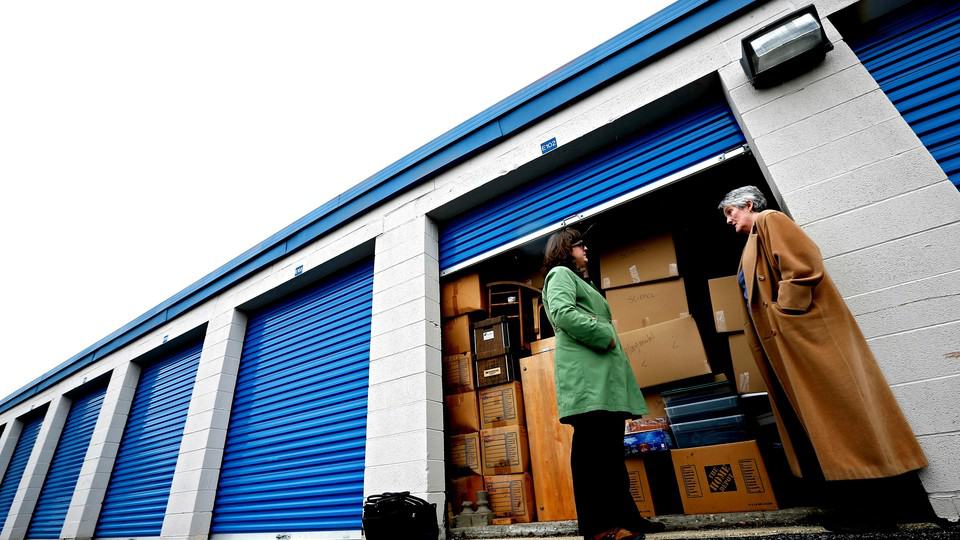Moving can be a real drag sometimes. There’s checking out the new neighborhood, buying or renting a house, getting home insurance quotes, and a ton of heavy lifting involved in the process. Although it’s great that you got that new position at work and are finally heading to a place you probably always wanted to go, the actual process of moving can kind of be a pain in the neck. It’s not enough that you have to pack things, hire help, move them from one place to another, and then unpack them. Sometimes you’re not going to have enough space for your precious belongings. That’s where self-storage solutions can swoop in to the rescue! They’re simple, convenient, and cost-effective solutions to your moving and storage concerns. Check out our short guide to self-storage below.

What Constitutes Self-Storage
Broadly speaking, self-storage is merely renting out a storage unit of a certain size and organizing, paying for, and inventorying your own storage. It’s a standalone unit within a complex that is a safe, secure means to store items long term. Usually, in self storage, you can access the grounds anytime day or night get into your items. You will have a key and lock for your storage facility and be able to interact with it at your leisure. There will definitely be an office at the self storage facility where you can interact, ask questions, make payments, and so on but for the most part it is a self-contained, self-sufficient experience.
Reasons To Use Self-Storage
Using self storage is ideal for many different things. Decluttering is probably one of the big ones for most of us. Then there’s staging your stuff for a move or relocation. It’s quite likely the first thing you’ll be using your storage unit for. Keeping some of your larger items out of the way or stuff you’re not ready to move quite yet is easier accomplished with some form of self storage. Storing important personal documents like old financial statements, birth certificates, or paperwork that you need to keep or isn’t available in digital form is another great use for self storage. There’s also potential to store items you don’t plan on parting with but still want to access it at some point. For instance, if you decided to get back to that old drum kid or pull out that old stereo one of these days it’s nice to know you have it available in your storage unit. Vehicles can be stored on a self storage facilities lot, too, including boats, cars, or RVs. There’s some things that Self-Storage probably isn’t suited for, such as running a business out of the storage unit. It’s also illegal to live in a storage unit in most states, not to mention a generally bad idea. Self storage is best suited for, well, storing things. At the end of the day, keeping your items safe is the best purpose and ultimate goal of any Self Storage facility.
Finding The Right Storage Unit
Finding the best storage unit for your needs can be pretty simple, thanks to the internet. If you’re looking for some great storage units in California, they’re not going to be difficult to find. With it being such a large state and plenty of new residents heading there every year, the need for self-storage and storage units is high. If you’re looking for the best self storage, San Diego storage units shouldn’t be a chore. Simply do an online search for storage units in the area to find a plethora of affordable storage units that can suit your self-storage needs.

Measuring And Assessing The Unit
If you’ve already found the self-storage unit you desire, you better make sure that it will work for your needs! The best way to know how much space you need is to assess the amount of stuff you’re trying to store. What kind of stuff are you going to place in the unit? Can you put it in totes or boxes and stack it? Is it something that needs to be taken apart and stored separately? What kind of items will you be storing? Appliances? Media? Furniture? All of these variables matter when it comes to choosing the right size storage unit. Storage units can range from the size of a closet to the 5′ x 5′ to 10′ x 30′.
Temperature Control
Some of your most precious items might benefit from temperature or climate control. In the case of self-storage, temperature control is typically between the range of 55 to 85 degrees. Items that require storage within those parameters should probably be stored in climate-controlled units. Take your financial documents, photos, or important documents such as birth certificates. These are items that can crumble and disintegrate if they aren’t store their proper temperatures. Other items, such as anything that requires certain humidity levels (acoustic guitars are a prime example) can also greatly benefit from temperature-controlled storage. If this is an amenity you’re interested in having for your self-storage unit, be sure to check with the storage facility to see if it is offered. If it isn’t, you may want to seek an alternative elsewhere.
